Best Model to Buy - 997 GTS
The relative understatement of a Carrera 4 bodyshell, blessed with more power and torque and one of Porsche’s finest manual shifters, the 997 GTS is a sleeper and a keeper. Where prices for the full-blown GT cars have gone stratospheric in recent years, the GTS remains an affordable option by performance Porsche standards, and is blessed with greater year-round usability.
Price
From £50,000
Predicted price movement in the next five years
Comparatively rare, especially with the more desirable six-speed manual transmission, the 997 GTS is a car that looks likely to hold its value well. It may not be an investment per se, but this is a car you buy to drive and enjoy, and enjoy it you will.
Porsche 997 Model History
The 997 made its debut in 2004, a considered evolution of the much maligned 996, which had borne the brunt of criticism aimed at Porsche’s newly water-cooled powertrains and not wholly successful Nineties design direction.
The 997 returned to the trademark round headlight design, while subtly evolving the existing bodyshell. The interior was also significantly updated, with a considerably more modern and architectural aesthetic replacing the elliptical shapes of the 996.
Although still a markedly larger car than the air-cooled series that had ended in 1998 with the 993, the 997 was small by current 911 standards, making it agile and easy to position. The by-now highly evolved water-cooled flat-six engines were making over 350bhp in Carrera S guise, which equated to all the performance you would ever really need and usually a bit more besides.
But there was more to come, naturally. By the end of production, the second generation 997 Turbo S was making some 523bhp, good for 60mph in a fraction over three seconds and very nearly enough to pass 200mph. Meanwhile, the motorsport department in Weissach were making hay with the GT series, producing even more polished versions of the GT2 and GT3 in both regular and ‘RS’ guise.
But the 997’s significance should not be measured purely on its performance credentials. This was a milestone car for successfully introducing the dual clutch PDK transmission to Porsche’s flagship series, and also Porsche’s now ubiquitous and ingenious active suspension management or ‘PASM’.
In many respects the 997 is the sweet spot in the modern 911 range, being both small enough and analogue enough to feel largely uncorrupted, while offering the best of Porsche’s contemporary technologies to create an intelligent, dependable and addictive driving package.

Porsche 997 Models
Porsche 997 Carrera
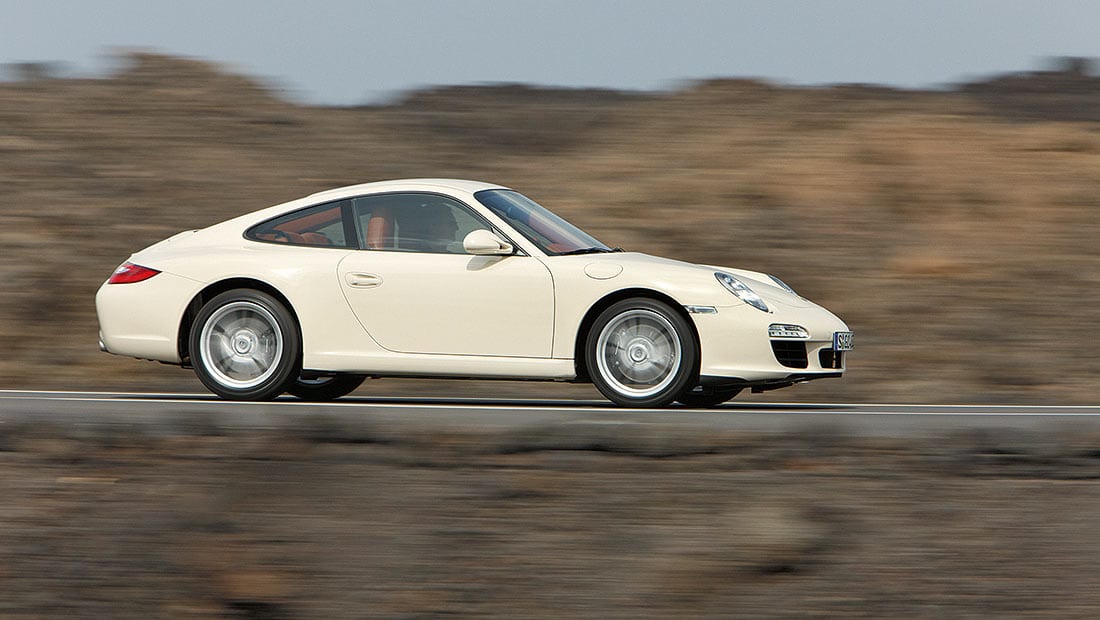 911 Carrera Type 997 © Porsche AG
911 Carrera Type 997 © Porsche AG
The 997 range starts, as ever, with the Carrera, equipped with a 320bhp 3.6-litre flat-six inherited from the earlier 996. Early cars have been known to suffer from something called ‘bore score’, although the problem is not as widespread as internet forums would have you believe.
The ‘S’ would see displacement creep up to 3.8-litres and 355bhp. Both cars were sold as Coupe and Cabriolet alongside the sliding glass roofed ‘Targa’ that had also carried over from the 996.
What to pay?
Carrera / Carrera 4: From £20,000
Carrera S / Carrera 4S: From £30,000
Porsche 997 Cabriolet and Targa
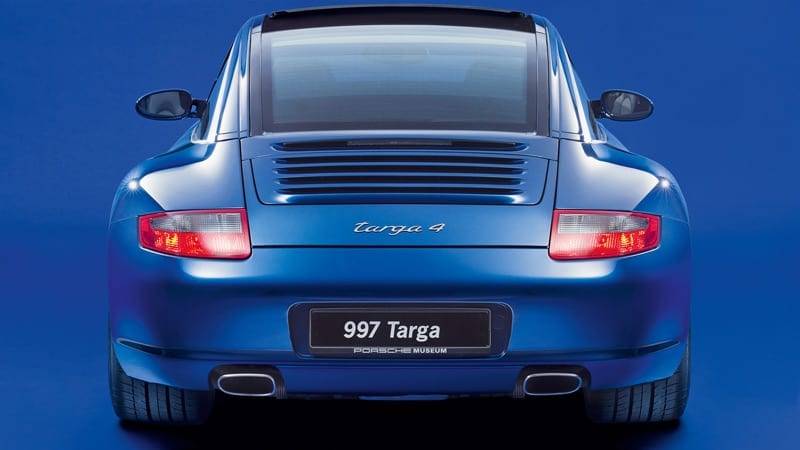
Porsche 911 Targa 997 © Porsche AG
The 997 was also produced in both Cabriolet and Targa guise, although the latter inherited the controversial sliding glass roof system that had debuted in the 993 back in 1996. The Targa canopy floods the cabin with light, but has been criticised for raising the car’s centre of gravity and proving costly to fix if and when its complex internals give up the ghost.
What to pay?
Carrera Cabriolet: From £25,000
Targa: From £30,000
Porsche 997 Turbo
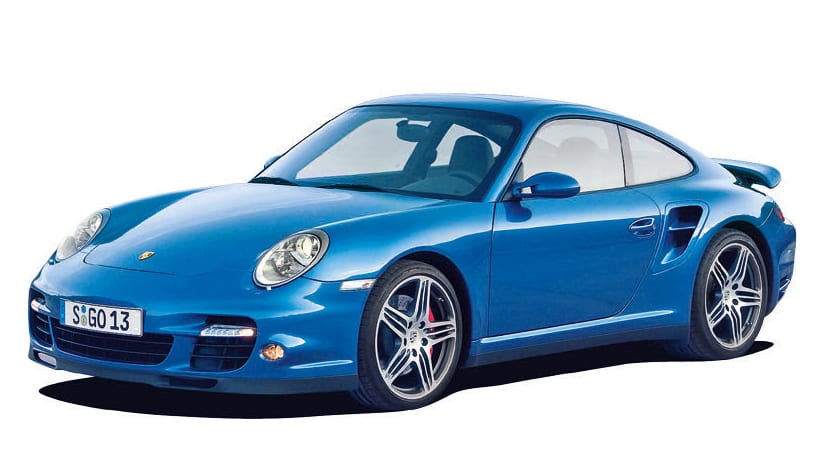
Porsche 911 Turbo 997 © Porsche AG
Using the Carrera 4’s widebody and all-wheel drive underpinnings, the 997 Turbo once again represented the pinnacle of Porsche’s engineering abilities. Here was a luxury GT that could hit 60mph in 3.5 seconds and threaten the hallowed 200mph mark, but for all that it remained tractable around town and surprisingly useable day-today. Stunning to behold and breathtakingly quick, the 997 Turbo was, and remains, something of an auto engineering masterclass. And with that in mind today, these are an absolute steal.
What to pay?
Turbo / Turbo S: From £40,000
Porsche 997 GTS
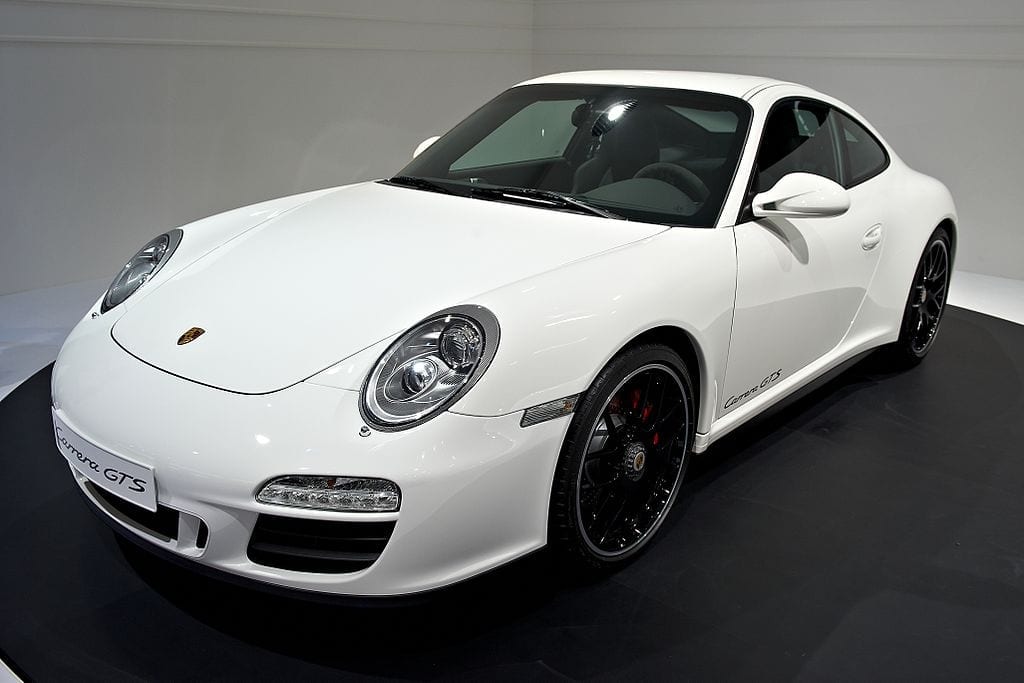
Porsche 997 Carrera GTS
Expensive when new in 2011, the GTS allowed Porsche to equip a standard 911 with a hefty checklist of performance-oriented options, tweak the powertrain and breathe new life into a series whose replacement was already waiting in the wings. But the GTS concept was a brilliant one, fine-tuning an already superb chassis and drivetrain to create an understated yet hugely capable run-out model.
What to pay?
Carrera GTS: From £50,000
Porsche 997 GT3 and GT3RS

Porsche 911 GT3 R (997) © Porsche AG
Following on from the runaway success of the 996 GT3, which had originally only been homologated to allow Porsche to enter the FIA’s new race series, the 997 applied the same processes to produce two world beaters in the GT3 and GT3RS. The lighter, harder, RS is widely regarded as one of the finest road-going driver’s cars of all time, especially in ultra-rare and chillingly expensive 4.0-litre guise. For many, this is peak Porsche – the perfect modern balance of performance and feedback. Prices are high now, as high as the equivalent 991 successor, and unlikely to head anywhere but north.
What to pay?
GT3 / GT3RS: From £125,000
Porsche 997 GT2 RS

Porsche 997 GT2 RS
With over 600bhp heading to the rear via a six-speed manual gearbox, the 997 GT2 RS was never a car for the faint-hearted. The most powerful, and quickest, 911 of its generation, this twin-turbocharged 200mph Behemoth recovered some of the widow-making ferocity that the highly technical all-wheel drive Turbo had sacrificed on the altar of big business. The GT2 RS was a low volume special that is rarely seen for sale today, and painfully pricey when it is .
What to pay?
GT2 RS: From £250,000
Porsche 997 Speedster

997 Speedster © Porsche AG
Reviving an idea that had been dormant for more than fifteen years, Porsche built a limited run of 997 Speedsters in 2011 through its ‘Exclusive’ in-house personalisation department. Underneath lightweight, chopped down bodywork was the GTS drivetrain, good for 190mph, although curiously in a car with such racing heritage, it was not made available with a manual transmission. Build numbers were restricted to a run of just 356 cars, finished either in Carrara White or unique ‘Pure Blue’.
What to pay?
Speedster: £200,000
Porsche 997 Models
Porsche 997 Carrera
 911 Carrera Type 997 © Porsche AG
911 Carrera Type 997 © Porsche AG
The 997 range starts, as ever, with the Carrera, equipped with a 320bhp 3.6-litre flat-six inherited from the earlier 996. Early cars have been known to suffer from something called ‘bore score’, although the problem is not as widespread as internet forums would have you believe.
The ‘S’ would see displacement creep up to 3.8-litres and 355bhp. Both cars were sold as Coupe and Cabriolet alongside the sliding glass roofed ‘Targa’ that had also carried over from the 996.
What to pay?
Carrera / Carrera 4: From £20,000
Carrera S / Carrera 4S: From £30,000
Porsche 997 Cabriolet and Targa

Porsche 911 Targa 997 © Porsche AG
The 997 was also produced in both Cabriolet and Targa guise, although the latter inherited the controversial sliding glass roof system that had debuted in the 993 back in 1996. The Targa canopy floods the cabin with light, but has been criticised for raising the car’s centre of gravity and proving costly to fix if and when its complex internals give up the ghost.
What to pay?
Carrera Cabriolet: From £25,000
Targa: From £30,000
Porsche 997 Turbo

Porsche 911 Turbo 997 © Porsche AG
Using the Carrera 4’s widebody and all-wheel drive underpinnings, the 997 Turbo once again represented the pinnacle of Porsche’s engineering abilities. Here was a luxury GT that could hit 60mph in 3.5 seconds and threaten the hallowed 200mph mark, but for all that it remained tractable around town and surprisingly useable day-today. Stunning to behold and breathtakingly quick, the 997 Turbo was, and remains, something of an auto engineering masterclass. And with that in mind today, these are an absolute steal.
What to pay?
Turbo / Turbo S: From £40,000
Porsche 997 GTS

Porsche 997 Carrera GTS
Expensive when new in 2011, the GTS allowed Porsche to equip a standard 911 with a hefty checklist of performance-oriented options, tweak the powertrain and breathe new life into a series whose replacement was already waiting in the wings. But the GTS concept was a brilliant one, fine-tuning an already superb chassis and drivetrain to create an understated yet hugely capable run-out model.
What to pay?
Carrera GTS: From £50,000
Porsche 997 GT3 and GT3RS

Porsche 911 GT3 R (997) © Porsche AG
Following on from the runaway success of the 996 GT3, which had originally only been homologated to allow Porsche to enter the FIA’s new race series, the 997 applied the same processes to produce two world beaters in the GT3 and GT3RS. The lighter, harder, RS is widely regarded as one of the finest road-going driver’s cars of all time, especially in ultra-rare and chillingly expensive 4.0-litre guise. For many, this is peak Porsche – the perfect modern balance of performance and feedback. Prices are high now, as high as the equivalent 991 successor, and unlikely to head anywhere but north.
What to pay?
GT3 / GT3RS: From £125,000
Porsche 997 GT2 RS

Porsche 997 GT2 RS
With over 600bhp heading to the rear via a six-speed manual gearbox, the 997 GT2 RS was never a car for the faint-hearted. The most powerful, and quickest, 911 of its generation, this twin-turbocharged 200mph Behemoth recovered some of the widow-making ferocity that the highly technical all-wheel drive Turbo had sacrificed on the altar of big business. The GT2 RS was a low volume special that is rarely seen for sale today, and painfully pricey when it is .
What to pay?
GT2 RS: From £250,000
Porsche 997 Speedster

997 Speedster © Porsche AG
Reviving an idea that had been dormant for more than fifteen years, Porsche built a limited run of 997 Speedsters in 2011 through its ‘Exclusive’ in-house personalisation department. Underneath lightweight, chopped down bodywork was the GTS drivetrain, good for 190mph, although curiously in a car with such racing heritage, it was not made available with a manual transmission. Build numbers were restricted to a run of just 356 cars, finished either in Carrara White or unique ‘Pure Blue’.
What to pay?
Speedster: £200,000
Price Evolution / Market
Values for the 997 seem to be about as low as they can realistically be expected to go. Right now, a manual 997 Carrera S for in the region of £25,000 is probably the best Porsche purchase you can make. As with all modern Porsches, big build numbers for the standard series cars means that choice is plentiful and residuals correspondingly low too. Strike while the iron is hot
On the flip side of this, the rarer limited edition cars, specifically the GT variants, are at least as pricey as they were new and in some cases considerably more. These are the cars to buy as in investment, however, as they are highly unlikely to depreciate. But a standard Carrera is as good a modern daily driver as you’re going to get for any money, and they can be had for the price of a middling hot hatch.
Driving Experience
The 997 still feels like a small car on British roads, an under-appreciated part of the classic 911’s enduring appeal. Commodious enough to be a comfortable cruiser, it is also compact enough to position perfectly in a fast corner or dice with the challenges of inner city motoring. And even with its relatively modest output, the Carrera 2 is plenty quick enough, while sublime steering feel and peerless traction make these cars a joy to drive at any speed.
With the truly analogue, air-cooled years a distant memory, but the tech-heavy era of the 991 yet to come, the 997 strikes the perfect balance as a car with all mod cons and all the rear-engine foibles dialled out, but still a sense of proper 911-ness about its looks, its soundtrack and its driving characteristics.
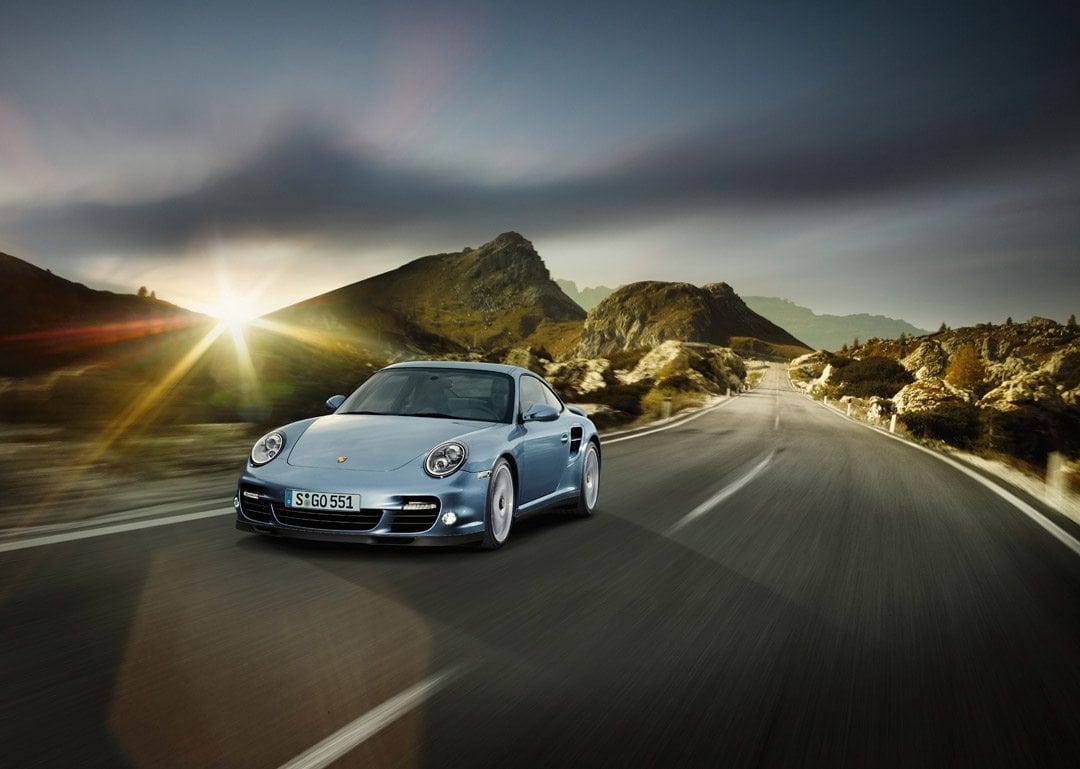
 Things to consider:
Things to consider:
1. Which one to buy
Perhaps uniquely to Porsche, your best bet is often the most basic car. A rear-wheel drive, manual 997 Carrera coupé is one of the great all-rounders, a car you can hammer or pootle, commute with or cross continents in. And these cars are outrageously good value right now.
Should your budget stretch to a GTS, this is definitely a sweet spot of sorts, offering increased performance and exclusivity, but in a car that remains both understated and affordable.
Having said that, the flagship Turbo, with its lag-less variable turbine geometry and savage 620Nm of torque, is another car for all seasons, both the quintessential distance cruiser and a supercar that its Italian contemporaries couldn’t hold a candle to.
Atop the tree, inevitably, sit the GT cars. Both GT2 and GT3, especially in lightened, more track-focused RS spec, are some of the greatest sports cars ever made and prices reflect their current halo status. Newer models are always faster and more capable, but the rawness and purity of this GT generation will remain unsurpassed.
2. Where to buy it from
Ideally you should look to buy any used Porsche from an approved dealer, but the age of the 997 will make this nigh-on impossible. However, many of the lower volume models are still a popular presence among the top tier of independent specialists, so if you have the budget, they are a good place to start.
That said, buying privately shouldn’t worry you unduly either. The 997 is a robust car capable of high miles and tolerant to a reasonable degree of abuse. But make sure you have a full service history, with main dealer stamps throughout its early life at least and from recognised independents thereafter.
As ever, be prepared to pay for a pre-purchase inspection. A small percentage of early Carreras were prone to bore scoring, which inevitably leads to an expensive specialist fix, but rest assured that this is not the terminal issue some will tell you it is.
If you are in the market for a 997, there are a number of ways JBR Capital can help. Our finance packages allow you spread the cost over a number of months, and as a private lender, we can tailor both hire and lease purchase arrangements around you and your chosen car. We also offer equity release, enabling you to finance a new purchase against the value or your existing collection.
3. What are the running costs?
A modern 911, well looked after early in its life, should not be inordinately expense to run. Service intervals are every two years or 20K miles and you should make sure this had been strictly adhered to in the past and follow suit yourself. Prices vary nationally but a minor service should be in the region of £300, rising to £600 for a major service. A new clutch will set you back close to £1000, but should then be good for 70 to 80,000 miles.
Pay for Porsche-specific N-rated tyres if your car is not already wearing them. These are expensive, at anything up £250 per corner, but are worth their weight in gold in terms of performance and handling.
4. What to look out for when buying a used 997?
The headline story with older 996 and early 997 is the IMS or intermediate shaft bearing, a part that was known to fail on a small percentage of early cars with catastrophic results. But replacement parts are now widely available and it is highly likely that your car will have had this relatively straightforward fix done. Make sure you find out, and negotiate that work off the asking price if it is outstanding.
The aforementioned bore score is another over-egged but nonetheless potentially expensive weak point of certain cars, more commonly the Gen1 3.8 ‘S’ Carreras. A specialist inspection should be able to determine the presence of scoring while also ensuring there are no other hidden surprises, such as a leaky rear main seal.
 Overall Conclusion
Overall Conclusion
After the imperfect styling of the 996, with its ‘fried egg’ headlights and bar of soap bodywork, the 997 recovered the 911’s standing as one of the most handsome and purposeful 20th Century car designs. With most of the water-cooled era’s mechanical teething problems also ironed out, it was, and remains, a dependable, desirable machine in any spec and at any price point.
You won’t be disappointed with a Turbo, GTS or indeed GT3 should your budget stretch that far, but it is the ‘lesser’ cars, the entry-level Carreras, that represent the best value and are, bang for buck, the very best Porsches on sale today. You cannot go wrong with a well-cared for manual 911 Carrera. The 997 really is one of the all-time great series production Porsches. Take the plunge and you won’t regret it for a moment.
We have more guides to buying a Porsche
The main things to consider when buying a Porsche – what are the best buys, how to finance and how to make sure it’s the best car for you.
 Things to consider:
Things to consider: